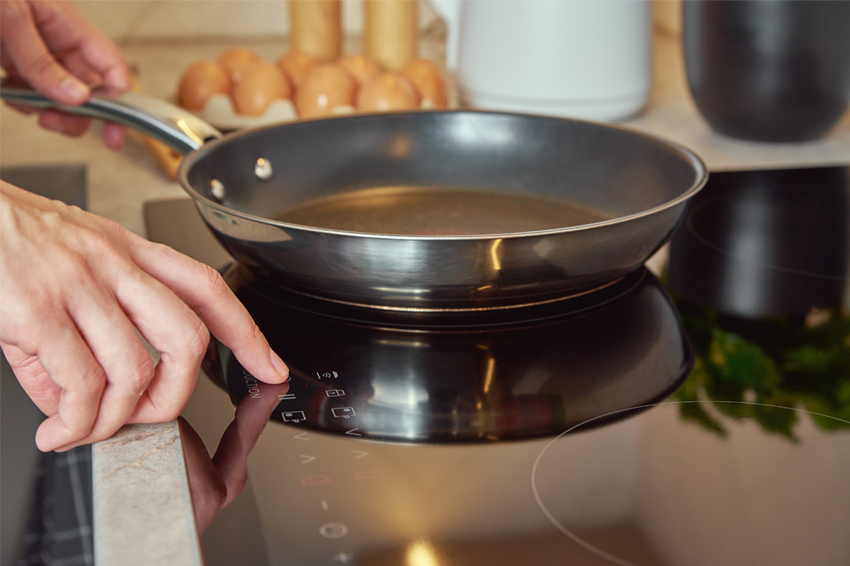Some people insist that food cooked on a gas stove simply tastes better. Others prefer the easy cleanup of electric or induction stovetops. But which type of stovetop is actually better? While there’s no universal answer, we’ll focus on the scientific perspective—specifically, which option is preferable in terms of safety and energy efficiency.
A stovetop—regardless of type—is designed to transfer heat in a controlled manner to the food being cooked. The gas stove, in many respects, is the modern descendant of cooking over an open flame. Archaeological evidence shows that humans have used open fire for cooking since prehistoric times, and today millions of people in the developing world still rely on this method. However, it’s long been established that cooking over an open flame indoors poses significant health risks. Cooking with gas is somewhat less harmful, as it burns more efficiently and emits less black carbon – a major pollutant posing the main health hazard to humans.
But the use of gas stoves is not devoid of risks. They rely on a high-energy fuel source in the home kitchen, which carries potential carries—ranging from minor burns to serious injuries and even fatalities. In addition, studies show that gas stoves tend to leak consistently, which can negatively impact the respiratory system.

The induction cooktop offers a much safer alternative. A pot on an induction stove | Shutterstock, nikkytok
The Safer Option
In contrast to the risks associated with gas, induction cooktops offer a significantly safer alternative. Using a magnetic field, they transfer heat directly to compatible pots and pans—eliminating the need for high-energy fuels like cooking gas. The risk of burns is also much lower, since the cooktop surface heats up only upon contact with compatible cookware.
Still, safety isn’t the only factor to consider. The choice of stovetop may also be influenced by environmental factors—particularly its carbon footprint, which includes both direct and indirect emissions of carbon dioxide and other greenhouse gases. In this context, determining the best stovetop option becomes particularly challenging.
Let’s begin with the gas stove. It generates heat through the combustion of natural gas, transferring the stored energy to the food being cooked. Since part of the process involves burning natural gas, this method inevitably produces carbon dioxide, contributing directly to greenhouse gas emissions. In contrast, an induction cooktop relies on electricity. However, the environmental impact of using one depends heavily on how that electricity is produced—a factor that varies widely by region. In countries with electricity grids powered largely by renewable energy, induction cooktops offer a clear environmental advantage. When you consider that an induction cooktop transfers heat with about 90% efficiency, compared to around 30% for a gas stove, this conclusion becomes even more compelling.
Stoves Around The World
The environmental impact of different stovetops varies significantly depending on where you live—particularly because electricity generation methods differ widely from country to country. In many regions, electricity is still primarily produced by burning fossil fuels, with only a small percentage coming from renewable sources. This means that even induction cooking—which relies on electricity—can come with a substantial carbon footprint, depending on the local energy mix.
If we consider that electricity generation from natural gas is typically only about 40% efficient—and factor in additional energy losses during transmission through power lines—the carbon footprint advantage of induction cooktops becomes far less certain in regions where the power grid is still largely dominated by fossil fuels.
Of course, the picture becomes even more complex when additional factors are considered—such as gas lost through leaks or the energy required to manufacture an induction cooktop. While these likely wouldn’t dramatically shift the overall balance, they do add nuance to the comparison. Older-generation ceramic cooktops, which heat through conduction, could also be added to the discussion. However, they come with notable drawbacks: they deliver heat less efficiently than induction models, are slower to respond, and since the surface itself becomes hot, they also pose a greater risk of burns.
Ultimately, the energy efficiency and environmental impact of a stovetop depend largely on the local energy infrastructure. In regions where electricity is increasingly sourced from renewables, induction cooktops present a far more sustainable option. As more countries shift to cleaner energy, the case for induction is likely to become even stronger in the years ahead.


